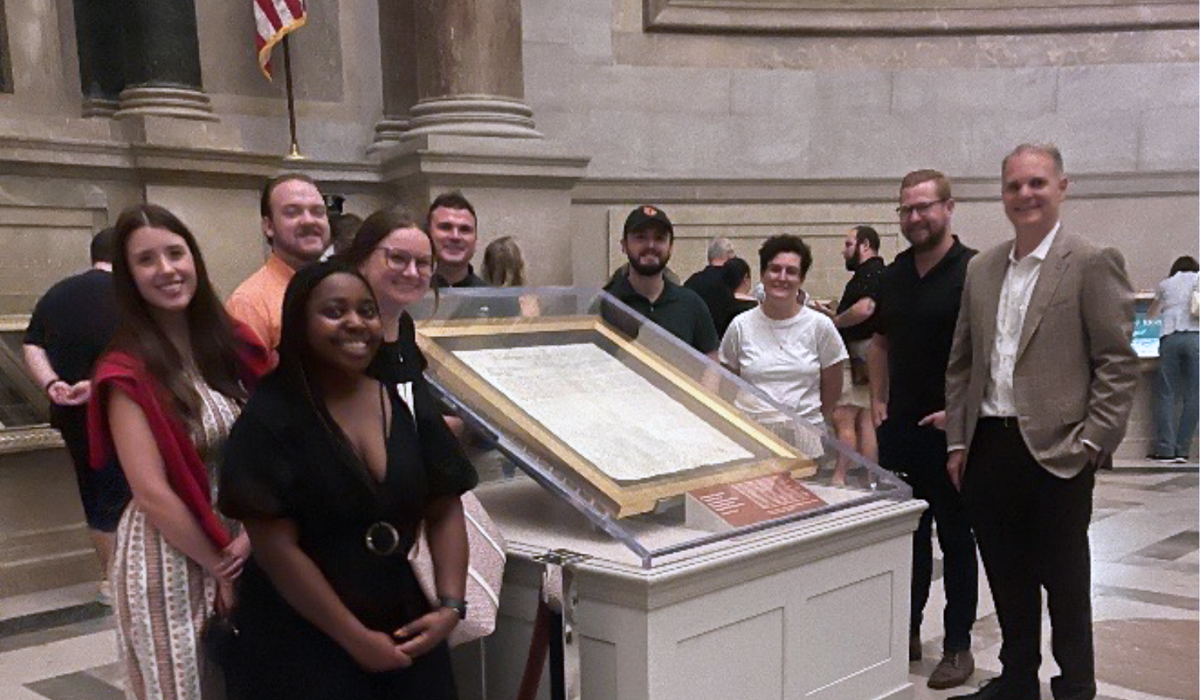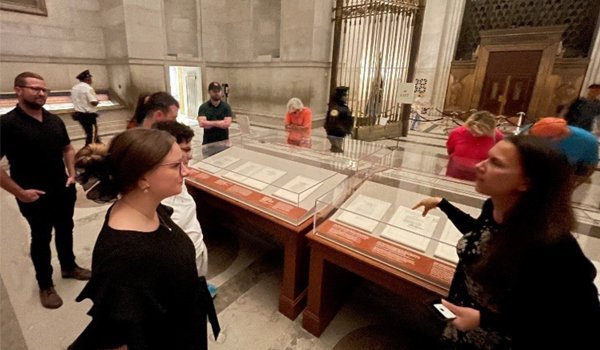 Professor Derek Webb with several members of his Constitutional Law I class
Professor Derek Webb with several members of his Constitutional Law I class
Evening students in Professor Derek Webb’s Constitutional Law I class visited the National Archives for a guided tour of a special display showcasing the entire U.S. Constitution—from the Preamble to the 27th Amendment.
Created in anticipation of the 250th anniversary of the Declaration of Independence, the National Archives presented the full text of the Constitution with all of its amendments, which had never been shown together in one single display in American history.
On September 26, 2025, just days before the government shutdown began, Professor Webb’s students were granted early access to the National Archives, an hour before it opened to the public. During their visit, they viewed the Constitution in its entirety, including the familiar four parchment pages containing the original text of the Constitution and the Bill of Rights.
The students also had the opportunity to see the rarely displayed “Fifth Page” of the Constitution. Known as the “Resolution Page,” this document outlines the process for ratifying the Constitution and establishing the new federal government. This page has only been displayed briefly once before, in 2012.
In addition, the display included the text of the 17 amendments ratified between 1789 and the present. Among these was the 13th Amendment, which abolished slavery in 1865 and bears President Abraham Lincoln’s signature—a symbolic addition, as his signature was not legally required.
 The tour was led by Jessie Kratz, Historian of the National Archives and the designer of this special exhibit. Her commentary provided valuable context for the students as they explored the documents.
The tour was led by Jessie Kratz, Historian of the National Archives and the designer of this special exhibit. Her commentary provided valuable context for the students as they explored the documents.
Brandon McKee (3E), a student in Professor Webb’s class, reflected on the experience: “We spend all our time reading judicial opinions that interpret the Constitution. But standing in front of the actual original parchment, you're not seeing an interpretation. You're seeing the primary source.” He added, “It’s the artifact that all those cases, and our entire profession, are built upon.”
John Salzillo (2E), a student from the same class, shared his thoughts as well: “I thought it was very cool to see the Constitution displayed in its entirety for the first time, at a point where the nation seems to be reassessing the meaning of the entire document.”
While the display in the rotunda has since been taken down, the public can still view high-resolution images of these historic documents through the National Archives’ virtual exhibit: Explore the Full U.S. Constitution.
